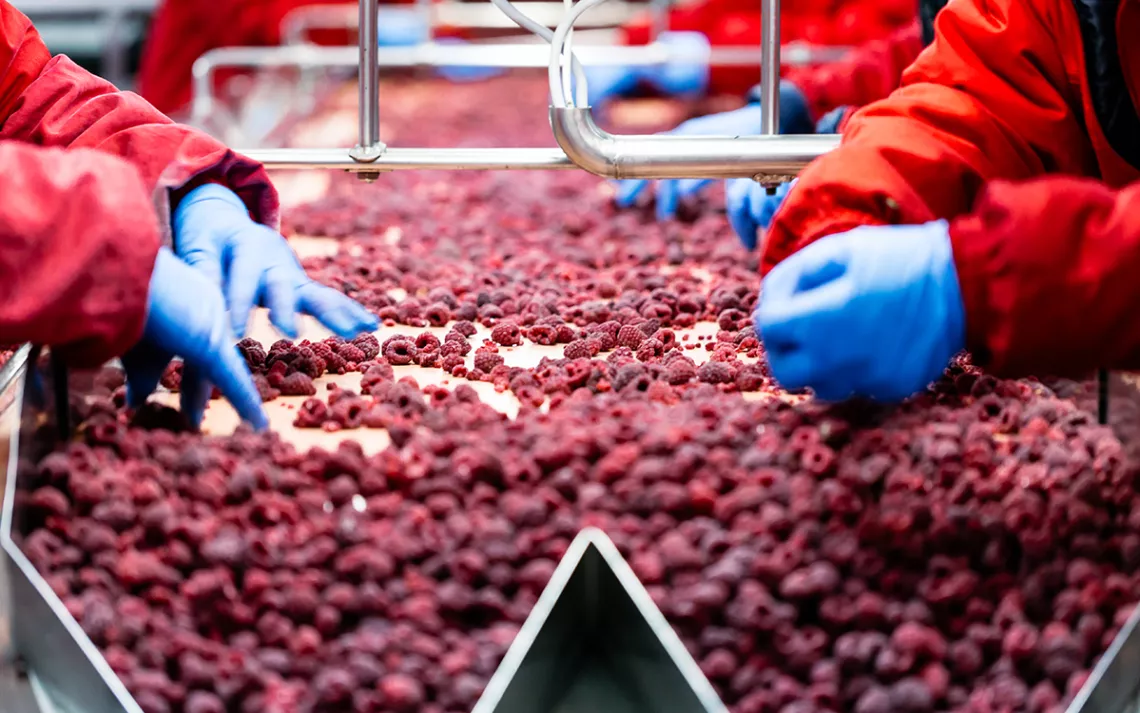What the Government Shutdown Means for Food, Farmers, and Eaters
It’s affecting food prices, beer, 2019’s growing season, and more

Photo by DuxX/iStock
The US government shutdown, now in its 27th day, has left nonessential discretionary programs in nine out of its 15 departments shuttered. One of these departments, the US Department of Agriculture (USDA), oversees or otherwise funds programs related to producing our food, getting it to people who need it, and making sure it’s safe to eat.
Almost 67 percent of USDA workers are considered “noncritical” and are thus furloughed; in many cases, they include staffers in offices that allocate funding to keep programs operational or get them up and running. Everyone else—anyone deemed essential—is currently working without pay.
Here are some details on how all this is affecting the agricultural sector, and more specifically, the food Americans eat.
Food Safety Inspections
USDA meat, poultry, and egg inspectors are still at it—with back pay forthcoming whenever the government eventually reopens. Inspectors at the Food and Drug Administration (FDA), who are funded through the USDA, are also (payless) on the job to check higher-risk products such as soft cheese, fish, and unpasteurized juice; the agency continues to monitor for foodborne illness outbreaks and to screen food imports, mostly for pests.
However, inspections of things like processed cheese, cereals, and produce (remember the recent multistate outbreak of E. coli from romaine?) are on hold, reports The New York Times.
Reimbursements & Loans to Farmers
Farmers who produce soybeans and other major commodities like corn have been promised $12 billion in relief for loss of income suffered due to the administration’s tariffs against China. Some farmers were able to certify their production and receive their checks before the shutdown occurred. But a new application deadline of January 15 (which has now come and gone) means that, without the USDA’s Farm Service Agency (FSA) employees on the job to process payments, they have yet to be approved, let alone mailed out.
According to the Daily Iowan, a further squeeze to farmers comes from a lack of access to guaranteed loan programs, also via the FSA. But the agency also grants “direct operating and micro-loans to smaller and more disadvantaged farmers,” says Andrew Jermone, communications manager for the National Farmers Union. “The FSA is a lender of last resort to people who can’t get financing elsewhere, so this is taking a tough toll on those individuals.” As a result, many are less likely to be able to afford purchasing seed and equipment and financing things like repairs in order to prepare for the 2019 growing season.
Research & Data
The USDA provides farmers raising soy, wheat, and corn with reports that allow them to make decisions about what crops—and how many of them—to plant for the upcoming year. The latest installment of the monthly World Agricultural Supply and Demand Estimates was scheduled to be released on January 11, but that deadline has passed, leaving farmers in the lurch. USA Today points out that down the line, this could lead to higher consumer prices for food.
“This is the most holistic publication available—a really big one that informs analysts and economists across the country, who [then] recommend to farmers what they should be planting this year,” says Jerome. “Because that’s delayed, that adds uncertainty to a market that’s already in a tough place right now.”
Food Reimbursements
SNAP, school lunch, and food distributions to federally recognized tribes—like the Chippewa reservation in Sault Ste. Marie, Michigan—are all dependent on funding from the USDA. SNAP benefits were set to run out in February, so the USDA scrambled to issue monies to states for early distribution to the program’s 38 million beneficiaries. No one’s sure yet what will happen beyond that month if the government remains closed. And as a Politico Morning Agriculture report highlighted on January 15, the burden is on recipients to make that money last.
Jerome is quick to point out that SNAP benefit distributions impact farmers, too, some of whom qualify for supplemental food income and are especially vulnerable right now, as other allocations remain unavailable.
Programs covering school lunch and after-school food programs, as well as Women, Infants, and Children (WIC) are funded through March. The USDA told ABC News it was looking into ways to fund beyond that.
“A prolonged shutdown will drain WIC agencies of critical resources, potentially resulting in clinic closures and other adverse consequences to participants,” Douglas Greenaway, WIC’s president and CEO, told Newsweek in December.
Beer Labeling
In order to sell beer, any new brewer requires a permit and approval of its beer labels from the Alcohol and Tobacco Tax and Trade Bureau, which is actually part of the Treasury Department (at which 83 percent of employees are furloughed). These approvals are on hold as well, with approximately 100 new brewers a month impacted.
Research
The shutdown is indeed impacting ag-related research at universities. “We can’t apply for the USDA permits we need to import soil and plant samples for my PhD students’ research,” University of Maine paleoecology and plant ecology professor Jacquelyn Gill tweeted on January 15. “I can’t apply to do the work we need to do at @BeringLandNPS. Both of these could jeopardize our field season and set back our work a year.”
Farm Bill
A new bill was signed into law in late December, and it included many programs for farmers that are pending until the government reopens—including re-upping a variety of expired conservation and land stewardship programs. The 2018 farm bill is of particular concern to struggling dairy farmers: It reduces insurance premiums for dairymen and -women, even those with small herds, to protect against price fluctuations, for example, and also makes it easier to make milk donations to food banks. Says Jerome, “Dairy farmers in particular are really hurting right now, and the longer the shutdown goes on, the worse it gets.”
 The Magazine of The Sierra Club
The Magazine of The Sierra Club



